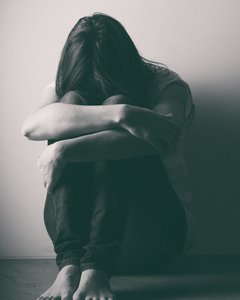Depression among local students continues to climb, according to the 2020 Illinois Youth Survey. More than 20 percent of high school students have seriously considered attempting suicide in the past year.
Forty percent of students felt so sad and hopeless almost every day for two weeks or more in a row that they stopped doing some usual activities. This is a seven percent increase from the 2018 survey. The Illinois Youth Survey was completed by students in Clark, Coles, Cumberland, Douglas, Moultrie, and Shelby County.
“Kids today face problems that didn’t exist even a decade ago. They absorb everything going on in the world and become very sad. We are desperate for crisis professionals like school counselors. We know our kids need to talk to someone, especially on hard topics like depression and suicide, but we just can’t find them,” Kyle Thompson, ROE #11 regional superintendent, emphasized.
Although the American School Counselor Association recommends a 250-to-1 ratio of students to school counselors, the national average is actually 424-to-1 for the 2019–2020 school year. Thompson explained that despite greater federal funding for education and mental health professionals, the district has struggled to recruit and retain all school personnel because of the pay and rural location. Schools try to address these concerns by encouraging teachers to guide kids toward social services, including mental health topics in assemblies, and educating teachers on self-care and mindfulness so they can pass it on to their students.
The Illinois Youth Survey is an initiative that measures teenagers’ feelings about substance abuse, nutrition, drinking and driving, weight control and body image, depression, suicide, safety at school, bullying, and tobacco use. Sarah Bush Lincoln Healthy Communities partnered with CEAD Council and the Human Resources Council of Edgar and Clark Counties to administer the study in the spring of 2020 before the COVID-19 pandemic. SBL Healthy Communities take the raw data to compile infographics to share the information in an easy to read and understand format.
Survey data is used by SBL Healthy Communities, schools and other agencies to understand teen risk behaviors and form strategies to improve the lives of area youth. The 2020 survey results include the following findings:
- Nearly three-quarters of students feel that there is a teacher or other adult at their school who really cares about them, and more than two-thirds of students feel safe at their school.
- Suicide and depression continue to be the top health concern of students by a large margin. Drug use remains the second highest health concern among students.
- Students use e-cigarettes at a much higher percentage than cigarettes.
- Alcohol use and impaired driving increased slightly among students.
- The perceived risk of harm from marijuana use decreases significantly from 8th grade to 12th grade at a 21-percentage-point difference. Personal disapproval of marijuana use decreased 32 percentage points from 8th grade to 12th grade.
Mike Tozer, SBL Licensed Clinical Professional Counselor, explained that while technology can contribute to worse mental health and behavior, it isn’t necessarily the problem – the problem is the content on kids’ screens.
“Kids have pressures today that didn’t exist years ago. Maintaining social media feeds or Snapchat streaks take up time and energy, and if kids feel like they don’t measure up to their peers, they can feel depressed,” Tozer clarified.
Tozer recommends that parents seek out their Human Resources department to see if their employee assistance programs offer free therapy services. Seeking an appointment with a pediatrician can also help identify any physical and mental issues.
For more information about SBL Healthy Communities or to read the full report, please visit https://www.sarahbush.org/healthycommunities/.

